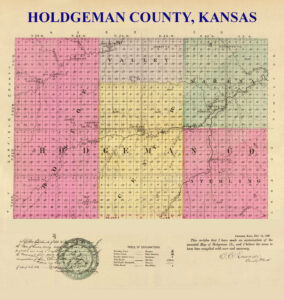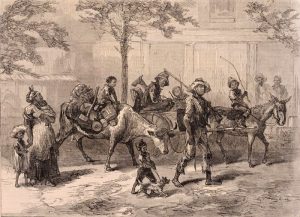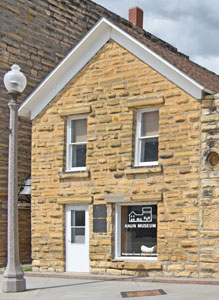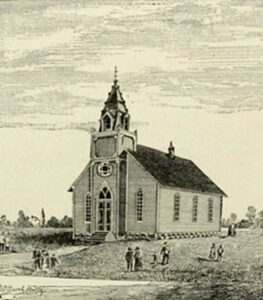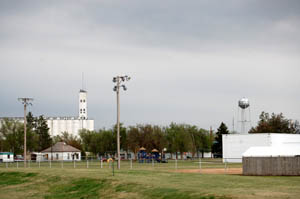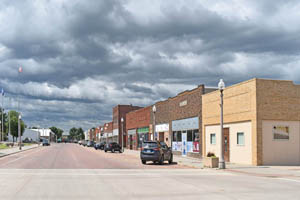Towns & Places:
Hanston
Jetmore – County Seat
Extinct Towns of Hodgeman County
Hodgeman County Photo Gallery
Horse Thief Reservoir
Jetmore City Lake
Pawnee Fork (River)
Hodgeman County, Kansas, in the southwest part of the state, was established and named for Amos Hodgman, a Captain of the 7th Regiment Kansas Volunteer Cavalry and noted buffalo hunter, in February 1887. Its county seat and most populous city is Jetmore. As of the 2020 census, the county population was 1,723.
Hodgeman County is bounded on the north by Ness County, on the east by Pawnee and Edwards, on the south by Ford, and on the west by Gray and Finney. It has an area of 860 square miles and an elevation of about 2,500 feet above sea level. It is 24 miles from north to south and 36 miles from east to west. The general surface is an undulating prairie. Along the streams were belts of timber, the principal varieties being ash, oak, cottonwood, boxelder, and hackberry, with a total area of natural timber of about 5,000 acres. The Pawnee River flows through the northern part; Buckner Creek rises near the southwest corner and flows in a northeasterly direction through the county, and the Saw Log Creek waters the southeastern part. These streams, with their tributaries, form an abundant natural water supply. The bottom lands averaged nearly a mile in width and constituted about one-tenth of the area. Limestone and soft sandstone were found in the bluffs along the streams, native lime was plentiful, and there was some gypsum near the center of the county.
Before the county was established, this area was home to the Pawnee Indians. An ancient sea once covered the Smoky Hills region and formed the underlying Greenhorn limestone layer. This stone proved especially useful to farmers in an area with few trees. They made rock fence posts to hold barbed wire fencing.
The first settlement in the county was made at Duncan’s Ranch on the Pawnee River, in the northeast corner, in 1871. Soon afterward, a party came from New York on a buffalo hunt and built a hunting house and stockade not far from Duncan’s, but made no permanent settlement.
The Fort Hays-Fort Dodge Trail ran through Hodgeman County. Army scouts and supply wagons made regular trips between forts. Established in 1867, it was used regularly until the Atchison, Topeka & Santa Fe Railroad reached Dodge City in 1872.
Bowman, Adair, and other cattlemen established ranches along the Pawnee River and Buckner Creek in 1873, and the following year, T. W. Pelman, located at the junction of Buckner and Saw Log Creeks, was at that time the most western settler in the county. From that time until 1878, there was a steady influx of settlers, among whom were James Gilland, J.W. Harlan, S.J. Eakin, L.E. Carter, J.R. Wilson, S.A. Sheldon, Samuel Townsend, J.R. Baird, and Clawson Parker.
In the spring of 1877, more settlements were commenced. There was only a small acreage of wheat sown, and the crop was cut short by hail. The average yield in 1878 was 26 bushels per acre; other grain and vegetable crops were good in 1877 and 1878. The best yield of winter wheat in 1879 was four bushels per acre. Spring crops were a failure. There was a slight growth of sweet and Irish potatoes, turnips, pumpkins, squashes, and an abundance of melons. The summer crop, embracing sorghum, rice, corn, broom corn, and millet, gave a medium yield in half of the county, the other half almost an entire failure.
The drought, of unparalleled duration in Western Kansas, commencing about September 1, 1878, so affected the Hodgeman County settlers that they appealed for temporary aid. Reverend E.N. Ruddock secured valuable contributions from Eastern Kansas for these people. A Central Aid Committee was formed in the county to distribute the donations received.
African American Exodusters began arriving in Hodgeman County from Kentucky in 1879. Establishing Morton City, they farmed, homesteaded, and raised families. However, life was difficult, and they struggled to make ends meet. The town was eventually abandoned.
In early 1879, a census was conducted by S. A. Sheldon. It showed that the county had the number of inhabitants required by law for an independent county organization. The people selected John W. Hunter, Samuel Townsend, and D. McCarty for county commissioners and E. M. Trimble for county clerk. They petitioned the governor to issue a proclamation declaring the county organized.
In March 1879, Governor John St. John proclaimed to that effect, but, except for John W. Hunter, he did not appoint any of the officers recommended by the people. The commissioners named by the governor were Jonathan R. Wilson, John W. Hunter, and S. A. Sheldon, and the clerk was W. W. Wheeland. Hodgeman Center, 2.5 miles east of the present town of Jetmore, was designated as the temporary county seat. The commissioners’ first meeting was called for April 14, 1879, but one of the commissioners and the clerk were absent, and nothing was done at that meeting. The people of Hodgeman Center constructed the first frame building to be used as a courthouse.
On July 7, 1879, the commissioners appointed the other county officers, who served until the general election the following November. At that time, the following were elected: Samuel Townsend, representative; George Curtis, sheriff; E.M. Prindle, county clerk; A.O. Dickinson, clerk of the district court; James Whiteside, Jr., register of deeds; W.A. Frush, treasurer; E.R. Fuller, county attorney; G.A. Curtis, superintendent of schools; C.E. Boughton, Philip Best and Lewis Stroud, commissioners.
At the general election, November 4, 1879, a vote was taken on the location of the permanent county seat, with the following result: Buckner, 199; Marena, 107; Hodgeman Center, 40; Fordham, 5. In late 1879, a group from Buckner went to Hodgeman Center, gathered the county records, and brought them to the stone Haun House in Buckner. The name of Buckner was changed to Jetmore a short time after the permanent selection of the county seat. It is located in the center of the county.
The county was divided into nine townships: Benton, Center, Hallet, Marena, North Roscoe, Saw Log, South Roscoe, Sterling, and Valley.
In the meantime, several newspapers had been started in the county. The Hodgeman Center Agitator began its career on March 1, 1879, with W.W. Wheeland, the County Clerk, as its editor. The last number of the Agitator was issued on January 10, 1880, and with its demise, its editor went out of the office.
The first issue of the Fordham Republican was circulated on April 9, 1879, by Guy F. Carleton, editor. Though this newspaper was designated as the official paper of the county, it lasted just a little over six months before it was suspended in October 1879.
The Buckner Independent newspaper, originally the Spearville News of Ford County, was established by T. S. Haun on November 7, 1879.
The governor’s appointments failed to give satisfaction. When the commissioners’ first meeting failed, the Fordham Republican said, “We presume that Mr. Wheeland, the governor’s county clerk, will be on hand at the next meeting, provided he establishes a residence in the county by that time. It looks as though the governor was straining a point somewhat when he ignored the fact that we had competent material for county officers and went to Edwards County for a clerk.”
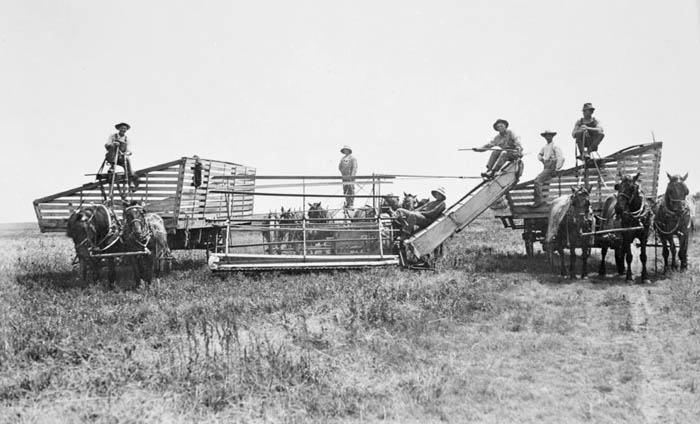
Harvest Crew in Hodgeman County, Kansas.
In 1880, winter and spring grain were an entire failure; summer crops were better than in 1879, but little Indian corn was raised, and considerable rice corn was a good substitute for feed and food. Plenty of fodder was secured for stock.
As noted in the Hodgeman County Commission Journal A, the Kansas Supreme Court declared Buckner the county seat on January 31, 1880. The name was later changed to Jetmore, which was the geographical center. A one-and-a-half-story, 12 x 24-foot frame building called the Buck House in Jetmore was leased for use as a county courthouse on February 2, 1880. By January 1881, the courthouse offices had been moved back to the stone Haun house on Main Street, and a lease had taken on the upstairs rooms.
On June 24, 1880, the Independent newspaper was dated at Jetmore. In March 1881, it became the Jetmore Republican. On December 16, 1881, W. S. Kenyon became associated with T. S. Haun in its management, and on December 23, Frank H. Nash became editor.
By this time, several churches had been established in the county, including Baptist, Christian, Congregational, Lutheran, Methodist, and Catholic. In 1880, Hodgeman County had 1,704 inhabitants; in 1882, their number had decreased to 1,141. The number of school districts in the county in 1880 was 12; in 1882, the number was 14. The number of children of school age in 1880 was 138; it was 383 in 1882.
In the spring of 1882, the frame courthouse building initially built by the people of Hodgeman Center was purchased by the county commission. It was moved by 13 yoke of oxen to the original townsite of Jetmore, to land given by T.S. and Elizabeth Haun. Soon, a petition and motion to issue bonds for $20,000 to build a courthouse and jail were initiated. However, the special election failed 510 to 495.
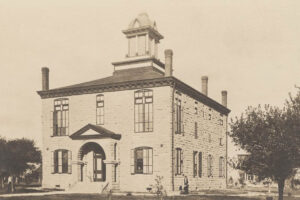
A new Hodgeman County Courthouse was built in Jetmore, Kansas, in 1886.
The Jetmore Reveille newspaper was started on December 27, 1882, by W. S. Kenyon, editor and proprietor. It soon became the official newspaper of the county.
A second election to build a new courthouse for $10,000 was held and passed 576 to 527 on March 30, 1886. Bonds were issued, and a Topeka architect and general contractor were hired.
The original frame courthouse was sold at public auction with the completion of the Stone Courthouse and moved a block west, where it was variously used for many years.
The new courthouse was built in 1886 with locally quarried limestone. It was described as: “Hodgeman possessed one of finest looking public buildings in Western Kansas… walls made of stone that was quarried upon the hillside overlooking the City of Jetmore… beautiful archways, east and west, welcomed the public… a cupola with stateliness and grandeur looked over the broad, expansive prairies beyond and expressed in silent terms its gratitude to a grateful and generous people.
The courthouse was considered a safe shelter in times of storms or prairies in the following years. It contained the assembly hall for court trials, political conventions, religious meetings, entertainment, spelling bees, Christmas trees, and patriotic occasions.
With the completion of the Stone Courthouse, the county was in a “booming” period and peaked in 1887.
Prosperity was soon followed by a depression when drought and heat caused crop failures. During these years, the depression was keenly felt, and many left the area, with one having a sign that said, ” In God, we trusted in Kansas, we busted.”
Finally, in 1900, a significant improvement occurred.
In 1910, Hodgeman County had about 20 miles of railroad, the western part of the Larned & Jetmore division of the Atchison, Topeka & Santa Fe Railroad system. At that time, the population was 2,930. The assessed property valuation was a little over $6,500,000, and the value of agricultural products for the year was $1,158,560. Wheat, corn, sorghum, Kafir corn, and hay were the leading crops.
In the following years, the economic climate of Hodgeman County was affirmative and hopeful. The Biennial Report of the Kansas State Board of Agriculture showed in 1926 that the assessed valuation was 12 times greater in 1924 than in 1900; acreage of crops had tripled to 214,000 acres, and the value of farm products increased from $376,000 to $2,300,000, and livestock from $521,000 to $ 1,160,000. Over 300,000 acres were put into oil leases. School improvements and additions were being developed to meet the educational needs. Jetmore built a power plant and let contracts for a municipal sewer system. In 1927, Main Street was paved with brick using bonds. The county population from 1900 to 1925 increased from 2,019 to 3,611.
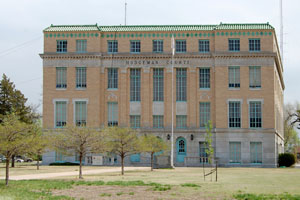
Another Hodgeman County Courthouse was built in 1929. It continues to serve the county today. Photo by Kathy Alexander.
In 1929, a new three-and-one-half-story Hodgeman County Courthouse was built at 500 Main Street in Jetmore, Kansas. Reflecting the Second Renaissance Revival style, it is situated in the center of the public square. It was designed by Routledge and Hertz Architects and Builders of Hutchinson, Kansas, and replaced an 1886 limestone structure.
Since the new courthouse was built at the same building site, county offices needed temporary locations. Some were relocated to the basement of the Masonic Temple, the United Methodist Church, the upstairs rooms of the Haun house, and the Citizens State Bank.
Changes were made to the electrical contract for finishing and furnishing the jail. All outbuildings, including the jail tower, were sold by auction on December 3, 1929. Some of the original 1880s furniture has been refinished and is still used today. On January 24, 1930, some county officials started moving their records into the new courthouse. By February 7, arrangements had been made to contract for painting, cleaning, and waxing the floors. The Jetmore Telephone Company soon installed telephones. The contrast of the simple, elegant style of the cut gray Carthage granite and fine gray brick with white stone trimmings and green terra cotta roof of the courthouse was dramatic and represented forward thinking.
The dedication of the courthouse was set for May 1. Nearly 5,000 people came and began arriving in mid-morning for the day-long celebration and open house. A band concert by the Dodge City Band began the festivities. A free barbecue was served at the county building. Judge Roscoe H. Wilson presided at the dedication program. The Bucklin Band provided the afternoon music. Old timers were introduced and honored with red armbands. Short speeches from five of those in attendance gave glorious testimonials of the hardships and rewards of being the early settlers. The county schools on the Jetmore High School Grounds presented a historical pageant.
Continuing to serve as the county courthouse today, it was listed on the National Historic Register in 2002
The county’s population continued to increase into the Great Depression to a high of 4,382 in 1933.
Afterward, the county was headed for hard times, and the number of people living in the county declined every decade.
On April 22, 1933, a petition was filed with the Kansas State Tax Commission to temporarily issue warrants to pay county operating expenses and care for people experiencing poverty until January 1934. The prospects were for total crop failure. Beginning in 1934, a gradual decline followed as people left the area for places free of dust storms.
As the years passed, delinquent tax lists lengthened, and the economy worsened. An undated document in the form of a petition was circulated in the late 1930s, collecting 276 signatures. The petition asked that all unnecessary expenses be cut, along with eliminating jobs and salary decreases. All unnecessary road work should cease. On the outside of one of the rolled
petitions, it was written in red pencil, “Tax Payers Kick.”
With the end of the 1930s, World War II brought many changes as young men went off to war, and those who remained at home learned to conserve and make do through rationing. With the end of the war, many returned to complete the last years of high school they had missed and to become a part of the community.
Today, Hodgeman County remains primarily agricultural. To learn more about the county, visit the Haun Museum at 421 Main Street in Jetmore. It is located in the first house built on the Jetmore townsite. Listed on the National Register of Historic Places, it was built in 1879 by T.S. Haun, the founder of Jetmore, then called Buckner. Here, visitors are given a glimpse of the daily life of the early County settlers.
Visitors can spend time at the Horse Thief Reservoir, Jetmore City Lake, and Buckner Valley Park for recreation.
©Kathy Alexander/Legends of Kansas, updated September 2025.
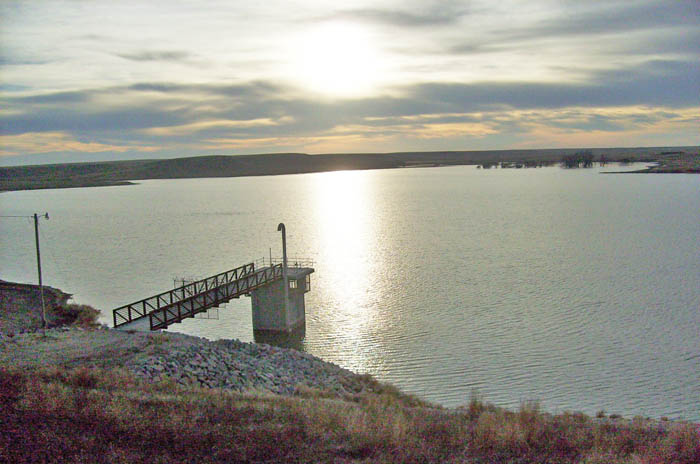
Horse Thief Reservoir in Hodgeman County, Kansas.
Also See:
Sources:
Blackmar, Frank W.; Kansas: A Cyclopedia of State History, Vol I; Standard Publishing Company, Chicago, IL 1912.
Cutler, William G; History of Kansas; A. T. Andreas, Chicago, IL, 1883.
Hodgeman County
Hodgeman County Courthouse National Register
Kansas State Historical Society
Wikipedia



